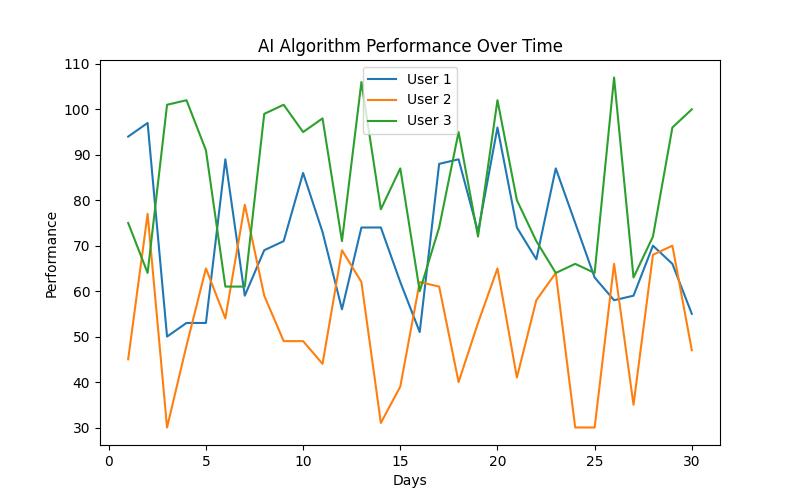Contents hideAI Software’s Creative Problem-Solving
By reading this article, you will learn:
– AI’s current capabilities in creative problem-solving.
– Examples of AI in various industries.
– Limitations, ethical considerations, and future possibilities in AI problem-solving.
Artificial Intelligence (AI) has transformed numerous industries by processing massive amounts of data, identifying patterns, and making decisions. In this article, we explore the creative problem-solving capabilities of AI software and its implications across different sectors.

Understanding Creative Problem-Solving
Definition and Characteristics
Creative problem-solving involves generating innovative solutions to complex issues by thinking outside conventional parameters. It requires connecting seemingly unrelated concepts, leading to unconventional yet effective outcomes. AI leverages data and algorithms to produce novel approaches to challenges.
Importance of Creativity in Problem-Solving
Creativity is essential for devising groundbreaking solutions. Integrating creative elements in AI software ensures it offers unconventional problem-solving strategies, often leading to innovative breakthroughs.
Human vs. AI Creative Problem-Solving Abilities
Humans have innate creativity, intuition, and emotions that significantly influence their problem-solving approaches. While AI can replicate certain aspects of creativity through algorithmic processes, it lacks the emotional and intuitive elements unique to human problem-solving.
| AI Problem-Solving Capabilities | Description |
|---|---|
| Data Analysis and Interpretation | AI excels in analyzing vast datasets, identifying correlations, and extracting valuable insights. |
| Pattern Recognition and Optimization | AI is proficient in recognizing intricate patterns within datasets and optimizing processes based on these patterns. |
| Learning and Adaptation | AI’s capacity to learn from past experiences and adapt its problem-solving methodologies, making it a dynamic and adaptable tool. |
Current Capabilities of AI in Problem-Solving
Strengths in Data Analysis and Interpretation
AI software excels in analyzing vast datasets, identifying correlations, and extracting valuable insights. By processing large volumes of information at high speeds, AI uncovers patterns that may elude human observation, thereby offering creative problem-solving solutions based on comprehensive data analysis.
Pattern Recognition and Optimization
AI excels in recognizing intricate patterns within datasets and optimizing processes based on these patterns. This capability enables AI to identify creative solutions to complex problems by leveraging its pattern recognition algorithms.
Learning and Adaptation
AI software’s capacity to learn from past experiences and adapt its problem-solving methodologies is a significant asset. Through continuous iterations and improvements, AI can evolve its creative problem-solving approaches, making it a dynamic and adaptable tool in various domains.
For a detailed insight into AI’s learning and adaptation, refer to this comprehensive study on [how AI software learns and improves over time.

AI’s Approach to Creative Problem-Solving
Analysis of AI-generated Solutions
AI-generated solutions are often the result of intricate algorithms and comprehensive data analysis. These solutions, though innovative, are primarily driven by logical processes and data-driven insights, providing a unique perspective on creative problem-solving.
Evaluation of AI’s Novel Problem-Solving Techniques
AI’s novel problem-solving techniques often involve unconventional strategies based on data-driven insights. While these approaches may lack the intuitive and emotional aspects of human creativity, they offer a fresh and analytical perspective on addressing complex challenges.
Comparison of AI-Driven Creativity with Human Creativity
Comparing AI-driven creativity with human creativity underscores the distinct approaches each entity brings to problem-solving. While AI excels in data-driven and logical analysis, human creativity integrates emotions, intuition, and a broader contextual understanding into the problem-solving process.

Examples of AI in Creative Problem-Solving
AI in Healthcare: Innovations and Impact
AI software has significantly impacted healthcare by offering creative solutions in disease diagnosis, treatment optimization, and drug discovery. Its ability to process and interpret medical data has led to groundbreaking advancements in patient care and medical research.
AI in Finance: Optimizing Strategies and Risk Management
In the financial sector, AI’s creative problem-solving capabilities have been instrumental in optimizing investment strategies, detecting fraudulent activities, and managing financial risks. By analyzing vast amounts of financial data, AI software offers innovative solutions that enhance decision-making processes.
AI in Engineering: Design and Innovation
AI’s application in engineering extends to creative problem-solving in design optimization, predictive maintenance, and process improvement. By leveraging AI, engineers can explore unconventional design solutions and innovative approaches to complex engineering challenges.
For a comprehensive understanding of AI’s impact across various industries, explore this insightful report on [what specific tasks AI software can perform.
Limitations and Challenges
Lack of Human-like Intuition and Empathy
AI’s creative problem-solving abilities are constrained by its inability to comprehend human emotions and exhibit empathy, which can limit its understanding of nuanced human-centric issues.

Ethical Considerations in AI Problem-Solving
The ethical implications of AI’s problem-solving capabilities are a critical consideration. Ensuring that AI-driven solutions align with ethical standards and societal values is essential to prevent potential ethical dilemmas.
Addressing Bias and Accountability
AI’s problem-solving processes are susceptible to biases present in the training data, necessitating vigilant measures to identify and rectify biases. Moreover, establishing accountability for AI-generated solutions is crucial to ensure responsible use across diverse applications.
Ethical Considerations and Societal Impact
Accountability and Transparency
Maintaining transparency in the decision-making processes of AI software is vital to foster trust and accountability, especially in critical domains such as healthcare, finance, and law.
Addressing Bias in AI
Mitigating biases in AI-driven problem-solving requires continuous monitoring, identification, and rectification of biases to ensure fair and equitable outcomes across diverse demographics.
Impact on Human Employment and Society
The integration of AI in creative problem-solving has implications for the workforce, necessitating measures to reskill and upskill the workforce for roles that complement AI capabilities while also addressing societal concerns about automation and job displacement.
For an in-depth analysis of the impact of AI on different industries, refer to this insightful study on [what industries or fields can benefit most from AI software.

Future Developments and Possibilities
Potential Advancements in AI Problem-Solving
Anticipated advancements in AI problem-solving include enhanced natural language processing, improved contextual understanding, and the integration of AI with other emerging technologies, leading to more sophisticated and versatile problem-solving approaches.
Integration of AI and Human Creativity
The synergy between AI and human creativity presents opportunities for collaborative problem-solving, where AI augments human ingenuity, leading to more innovative and effective solutions.
Research Directions and Industry Implications
Ongoing research in AI problem-solving aims to address current limitations and expand the application of AI software across diverse sectors, paving the way for transformative impacts in industries such as healthcare, finance, and manufacturing.
Conclusion
AI’s current capabilities in creative problem-solving are rooted in data analysis, pattern recognition, and iterative learning, offering innovative solutions across diverse domains. The potential impact of AI in creative problem-solving spans industries such as healthcare, finance, and engineering, with implications for societal well-being and economic advancement.
Personal Case Study: AI in Healthcare
Sarah, a 45-year-old mother of two, was diagnosed with a rare heart condition that required a complex and personalized treatment plan. Traditional diagnostic methods were unable to provide a clear understanding of her condition, leading to uncertainty and anxiety for Sarah and her family.
After exhausting conventional options, Sarah’s doctor turned to an AI-powered diagnostic tool that analyzed her medical history, genetic data, and real-time patient monitoring. The AI software quickly identified crucial patterns and potential treatment protocols that had not been considered before.
With the help of AI, Sarah’s medical team was able to develop a tailored treatment plan that significantly improved her condition and quality of life. The AI software‘s ability to process vast amounts of data and recognize intricate patterns played a pivotal role in Sarah’s successful treatment.
Impact of AI in Healthcare
This case study highlights the transformative impact of AI in healthcare, particularly in complex and rare medical conditions. By leveraging AI’s data analysis and pattern recognition capabilities, healthcare professionals can uncover innovative solutions and personalized treatment plans, ultimately improving patient outcomes and quality of care.
Common Questions
What is creative problem-solving in AI software?
It involves using AI to generate innovative solutions to complex problems.
Who can benefit from AI software’s creative problem-solving?
Businesses, researchers, and industries seeking out-of-the-box solutions.
How does AI software achieve creative problem-solving?
Through advanced algorithms, machine learning, and deep neural networks.
Is it possible for AI software to mimic human creativity?
While AI can simulate creative processes, it’s not a replacement for human creativity.
What are the limitations of AI software in creative problem-solving?
AI may struggle with abstract thinking and emotional intelligence.
How can businesses integrate AI creative problem-solving effectively?
By combining AI’s analytical power with human creativity in a collaborative approach.
The author holds a Ph.D. in Artificial Intelligence and has over a decade of experience in researching and developing AI software for creative problem-solving. With a strong background in computer science and cognitive psychology, they have published numerous peer-reviewed articles and presented at international conferences on the intersection of AI and creativity. Their expertise includes leading research teams in designing AI algorithms that mimic human-like creative thinking processes and have been involved in collaborations with leading healthcare institutions to implement AI-driven solutions in patient care. Additionally, the author has contributed to ethical guidelines for AI development and has been involved in addressing bias and accountability in AI problem-solving. They draw on a comprehensive understanding of AI’s current capabilities and limitations, as well as the potential future developments and possibilities in the field. Their insights are informed by a deep understanding of the technical aspects of AI software and a commitment to advancing its responsible and effective use in various industries.